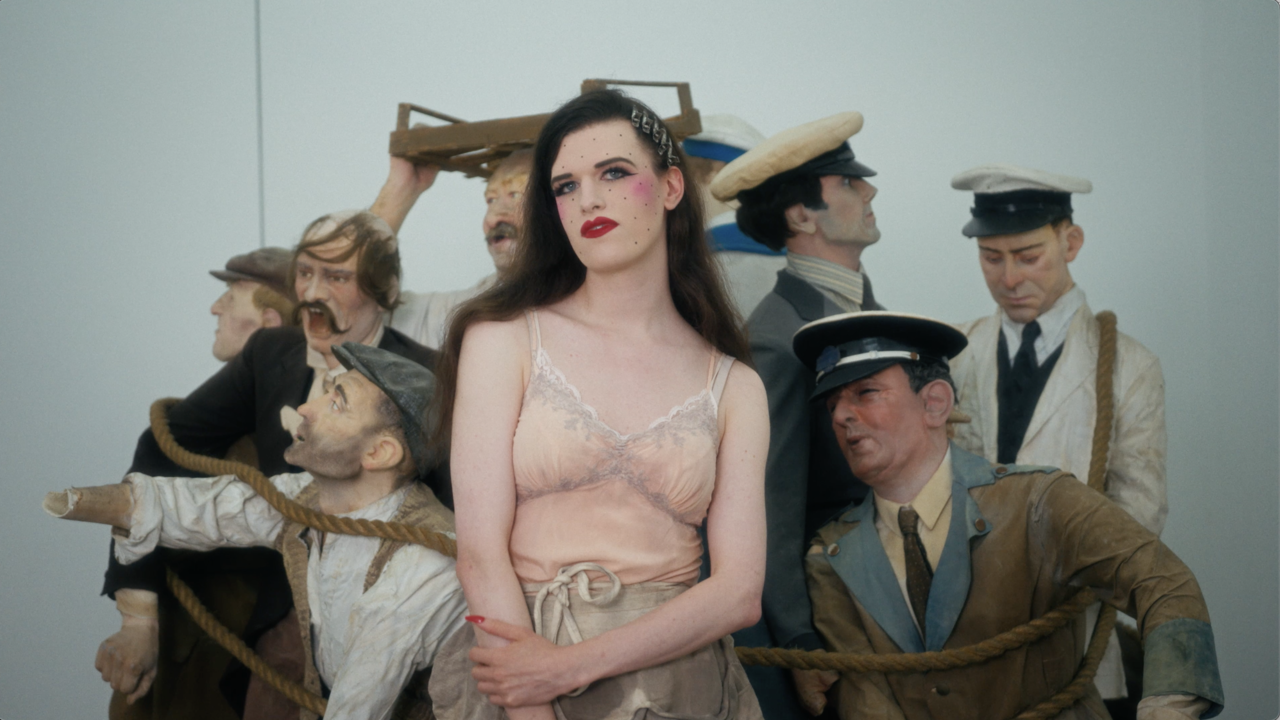Clinton Watkins
Abstractions of sound and image; the meeting of purity and distortion
Abstractions of sound and image; the meeting of purity and distortion

Out of pure blackness, a set of grey horizontal bars shimmers into view, stabilizes for an instant, then thins and disappears. A few seconds later the image is repeated, but this time the lines remain, gradually rearranging themselves to the sound of a low whistle and a metronomic tick. Black again, broken by a similar pattern, only now the bars are an intense yellow, subsequently shifting through a tonal range. Back to black, momentarily dispelled by two sudden pulses of deep scarlet, then by a needle-thin line. A clean bass note accompanies each pulse and an airy, ambient chord fills the intervals between them. The mood of New Zealand artist Clinton Watkins’ videos Line & Tone #1, #2 and #3 (all 2009) is hard to pin down – they’re cool, certainly, but also sensuous and direct in spite (or perhaps because of) their unadorned rigour.
At Watkins’ studio in the Auckland suburb of Grey Lynn, a vintage analogue synthesizer with four broken keys nestles between a circuit-bent video mixer, a teetering rack of salvaged compressors, a ‘breakout box’ and a noise generator. I watch and listen as the artist adjusts the levels to demonstrate the production of what he calls a ‘real-time abstraction’, an onscreen graphic created by (rather than simply in accompaniment to) an audio signal. Maintaining something of the Constructivist-derived aesthetic he originally adopted in his formational work as a painter, Watkins often begins – and sometimes ends – with distinctly stark juxtapositions of the seen and heard. In treating sound architecturally and exercising a corresponding sensitivity to visual rhythm, he aims to establish a kind of dynamic equivalence that may approach overload, or dwindle into near silence and virtual invisibility.

Watkins’ interest in recorded sound originated with printmaking. Thinking of the images he made on paper as records of a particular set of processes, he literalized the idea by documenting those processes on vinyl, presenting the discs alongside their inky analogues. In the 2001 show ‘Sexxx on the Beach’, at Auckland gallery Rm104, he exhibited a set of classical LPs etched with images of religious icons. ‘I was interested in distorting things with purity’, he recalls, tacitly acknowledging that purity might be an extant quality, a novel interjection, or both. Eventually, Watkins ditched the printed component but maintained a connection to the figurative image, initially via the circuitous route of storing photographic data on reel-to-reel audiotape and playing the cacophonous soundtrack into which they were inadvertently transformed. It is here that his practice joins a lineage of others, from the Futurists and Fluxus to Christian Marclay, Thomas Köner, Ryoji Ikeda and Tim Hecker.
Approaching sound not only as one component of a finished work but also as a unique raw material, Watkins escapes from the complacent tendency still rife in video art to sprinkle extraneous music or effects over images conceived independently of them. In addition to generating his own sounds with the aforementioned technology, he also makes use of found sounds and field recordings, but subjects every source to a rigorous process of mixing-desk distortion that invests them with a new identity unmoored from external reference. Experience in audio engineering and production armed Watkins with the technical smarts to be able to predict what the result of twiddling a certain knob would be, but his greater aim in learning such rules seems to have been to break them more thoroughly and with an ever-greater focus.

In his videos Cont Ship #1 (2005) and Cont Ship #2 (2006) Watkins depicts ocean-going cargo vessels crossing Auckland’s Waitemata Harbour from a side-view that flattens their vast hulls into slabs of intense colour and oversized text. As the crafts slide noiselessly by, they split the screen into horizontal bands of air, metal and water that suggest a vast flag, or a maritime Ellsworth Kelly. When fore and aft are both out of frame, the function of what we see becomes briefly unfathomable, and the ships’ identifying inscriptions are fractured into so much code. The lack of discernible human movement only adds to the abstracted feel. In Noir #1 and #2 (both 2008), figuration is disrupted not only by selective framing but also by the interpolation of visual noise. Here, Watkins subjects appropriated video clips to digital processing that collapses their original coherence into a cryptic stutter. Fragments of faces appear and begin to move, only to be frozen and sliced into flickering strips, or to have their speech interrupted by sounds borrowed from modern classical and electro-acoustic music.

Avalanche, a video from this year, also sees Watkins presenting a real event, but here he frames it to emphasize its natural strangeness, as well as its congruence with the behaviour of electronic signals and the patterning of post-painterly and post-post-painterly abstraction. Against an ominous sound track constructed from the drone of an air-conditioner, a rolling cloud of snow engulfs the smooth whiteness of an unnamed mountainside. The camera follows the leading edge of the avalanche until it begins to seem almost static – a kind of standing wave. Its violence and speed is transformed by the image’s airless composition and by the displacement of its accompanying sound into an unexpectedly ornamental phenomenon. Again, purity and distortion converge, until – if only in the mind’s eye – one finally subsumes the other.






















